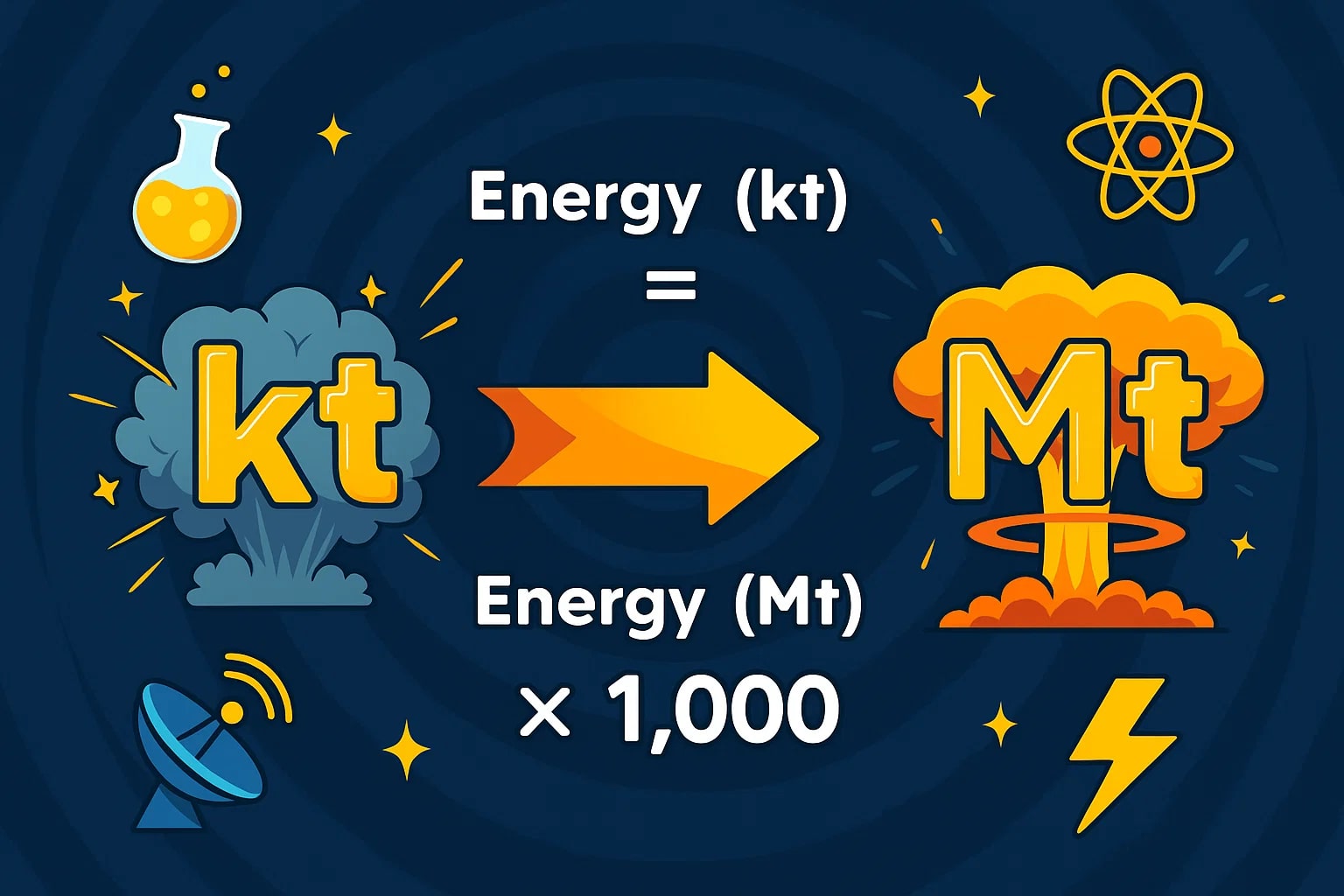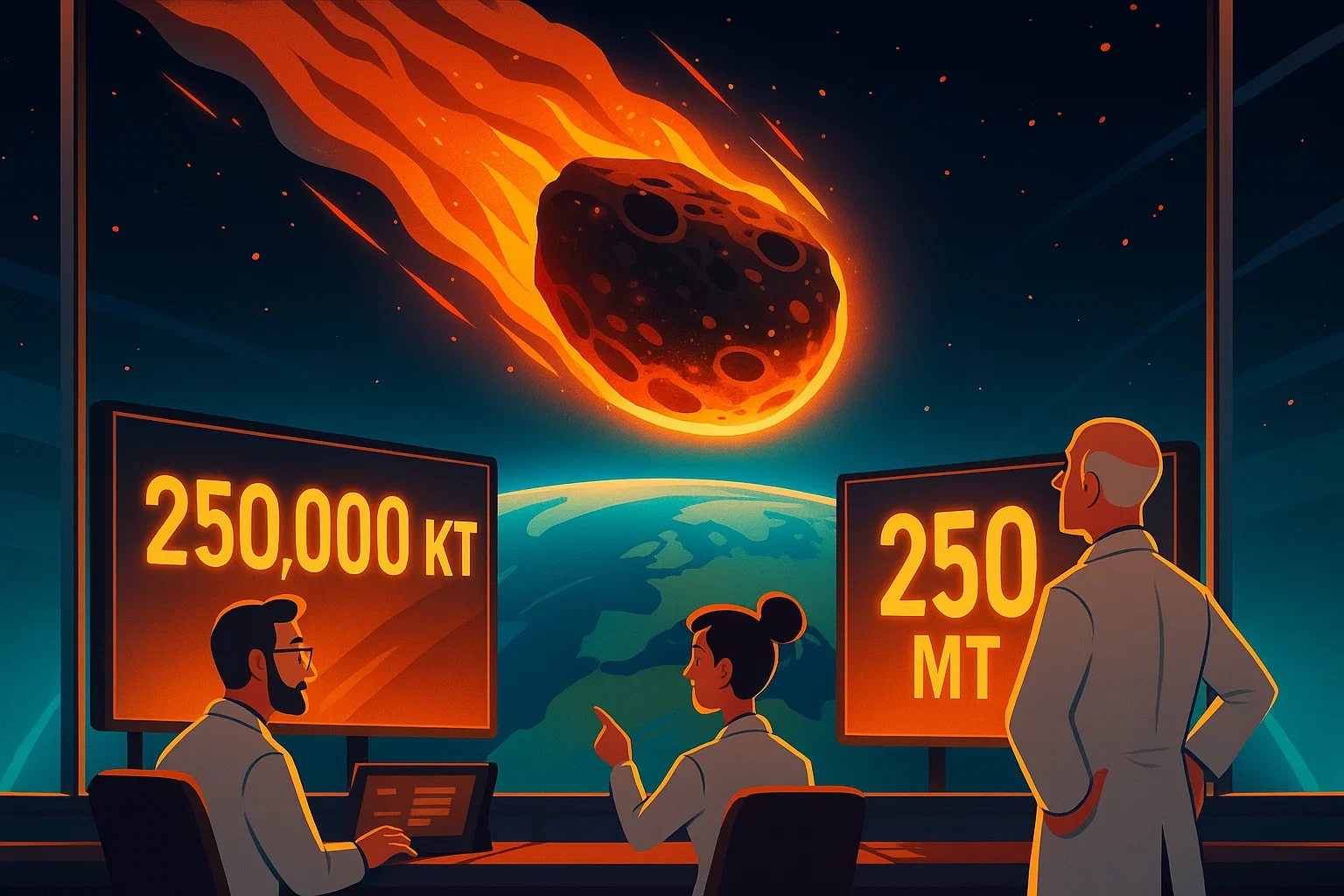kiloton to megaton – How to convert kt to Mt
The conversion from kiloton to megaton might sound like it belongs in a spy novel or a history book about the space race, but it’s also a key unit shift in modern energy and mass measurement. In simple terms, 1 megaton equals 1 000 kilotons. Whether it’s used for measuring the explosive yield of a nuclear device, the energy of an asteroid impact, or the mass of a colossal ice sheet, this con version keeps numbers clear.
version keeps numbers clear.
What is a kiloton?
A kiloton (kt) is equal to 1 000 tons (short or metric, depending on the context). In energy terms, 1 kiloton of TNT is conventionally defined as 4.184 × 10¹² joules. Kilotons are often used in military history, geology, and astronomy to express very large amounts of energy without writing endless zeroes.
What is a megaton?
A megaton (Mt) is equal to 1 000 kilotons, or 1 million tons. In energy yield terms, 1 megaton of TNT is 4.184 × 10¹⁵ joules. It’s commonly used when describing massive explosions, asteroid impacts, or global-scale energy events.
How to convert kiloton to megaton
The formula couldn’t be simpler:
Energy (Mt) = Energy (kt) ÷ 1 000
Example:
If you have 2 500 kt, then:
Energy = 2 500 ÷ 1 000 = 2.5 Mt
To go in reverse:
Energy (kt) = Energy (Mt) × 1 000
You can calculate it in seconds with our Energy Converter, and if you want to explore other fascinating measurements — from force to temperature — check out the complete range in our Conversion Tools collection.
Do you know?
-
Kilotons fact: The 1945 Hiroshima bomb had an estimated yield of about 15 kilotons — small by today’s standards but devastating in its impact.
-
Megatons fact: The asteroid that contributed to the extinction of the dinosaurs is estimated to have released energy equivalent to more than 100 million megatons of TNT.
-
Kilotons fact: In seismology, earthquake energy is sometimes expressed in kilotons for relatable comparison to explosions.
-
Megatons fact: In climate science, the weight of Antarctic ice loss is often measured in megatons per year.
When Hollywood Meets Physics: The Blockbuster Asteroid Scenario
Imagine the opening scene of a summer blockbuster: scientists at a high-tech observatory spot a massive asteroid on a collision course with Earth. The screen flashes numbers in kilotons as they calculate the potential energy of impact — let’s say 250 000 kt.
For the average moviegoer, that’s already huge. But when the hero scientist switches the unit to megatons, the number suddenly becomes a cleaner, more dramatic 250 Mt. It’s the same energy, just scaled up to fit the epic scope of the disaster — and to make sure the audience really feels the weight of it.
In real life, space agencies like NASA do this too. They may first calculate asteroid impact energy in kilotons for precision, then switch to megatons for public communication and inter-agency reports. The scaling makes it easier to compare to known events — like the 1908 Tunguska impact in Siberia (estimated at 3–5 Mt) or the 2013 Chelyabinsk meteor (~500 kt).
Whether it’s a movie plot or an actual emergency response, shifting between kt and Mt isn’t just about math — it’s about making the information instantly understandable to the right audience.

Big Numbers Made Manageable
The kiloton to megaton conversion is more than just dividing by 1 000. It’s about communicating colossal amounts of energy in a way that fits the scale of the story, project, or research.
Kilotons give you detail when the numbers aren’t astronomically high. Megatons give you a sweeping, big-picture perspective. Both are powerful — and both are essential when dealing with forces that can shake the Earth, change climates, or dominate headlines.
By being fluent in both, you can move seamlessly from the fine print of calculations to the high-level summaries that decision-makers, scientists, and the public rely on.

